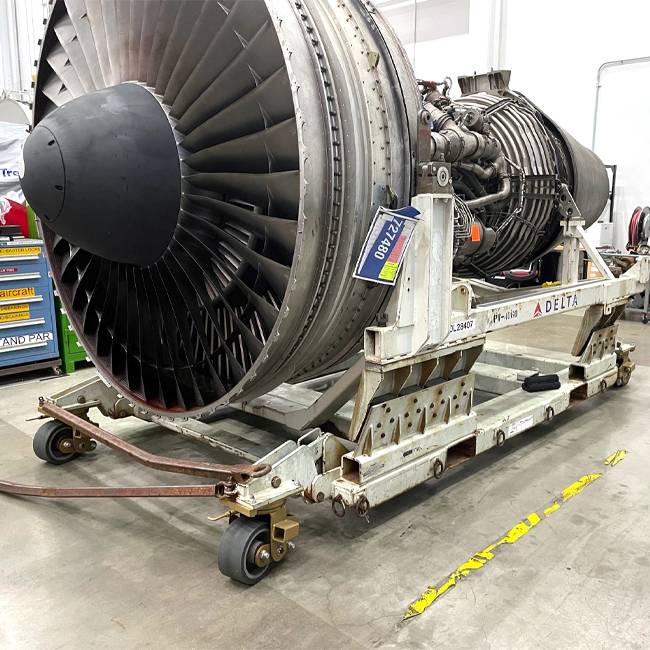

A technical services group serving the airline industry was responsible for rebuilding and testing jet engines for Delta Airlines. These multimillion-dollar engines arrive on engine stands and are then removed for repair and testing. When the engines are removed, a small window of opportunity exists to do any repairs on the stands before the engine is put back on the stands for shipping back to the customer.
These engine stands are heavy and need to be easily transportable to move the jet engines around to different parts of the facility. In one particular case, a jet engine stand was out of service while the engine for this stand was tested and ready to be shipped back.
The OEM equipment manufacturer was already experiencing a 20+ week lead time on casters from China. To prevent millions of dollars worth of downtime due to an engine waiting on the plant floor, the customer needed a solution fast.
The stands carried a that needed to be transported up to one mile at a time without experiencing any damage. This process required a spring-loaded caster that would carry 5,000 pounds and had to be custom-made to fit into the parameters of the original casters.
After speaking with our customer, Caster Concepts was able to pinpoint primary needs and custom-design a spring-loaded caster. In just four weeks, the caster was out the door — a far cry from the 20-plus weeks they would have experienced by having a caster shipped from overseas.
Because of an in-house engineering department and prioritized production, Caster Concepts can manufacture a one-off caster in a condensed time frame. This is an important distinction, as the time crunch on custom caster turnaround can put a lot of stress on manufacturers (especially when they are getting casters from overseas, where lead times can be upwards of 6 months).
A custom-engineered caster was in production in 1 week and manufactured in 3 weeks. This meant delivery to the customer in 4 weeks instead of the 20-week lead time from the original equipment manufacturer.
This was huge. The cost for a jet to be out of service per day can vary greatly depending on the type of jet, the reason for the out-of-service period, and other factors. But even a rough estimate puts the cost at around $10,000 to $20,000 per day for commercial jets, while a private jet could be significantly higher. Depending on the exact cost, this can equal a cost saving of 160-320,000.
Our Casters are engineered to maximize your productivity and reduce costs. For more information: